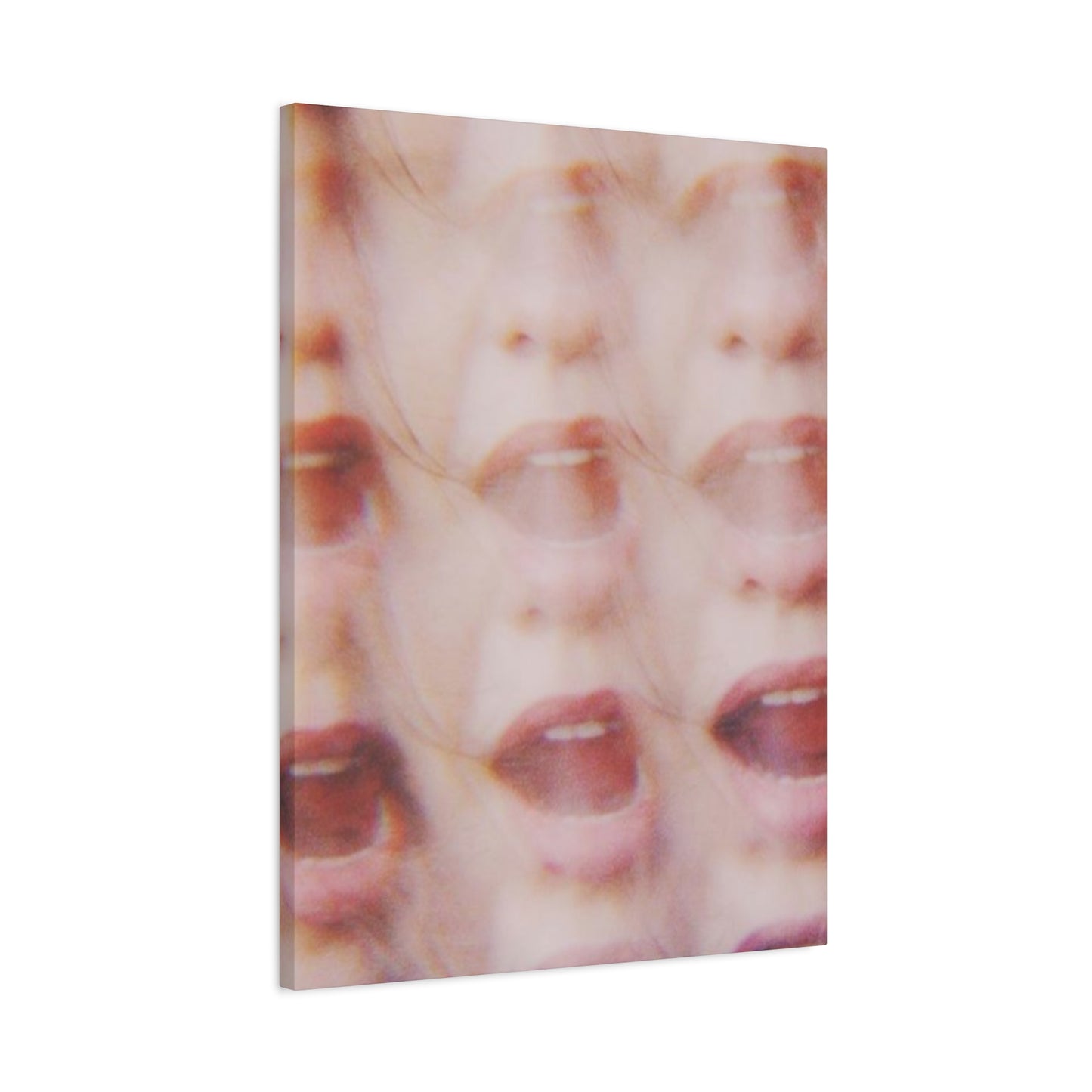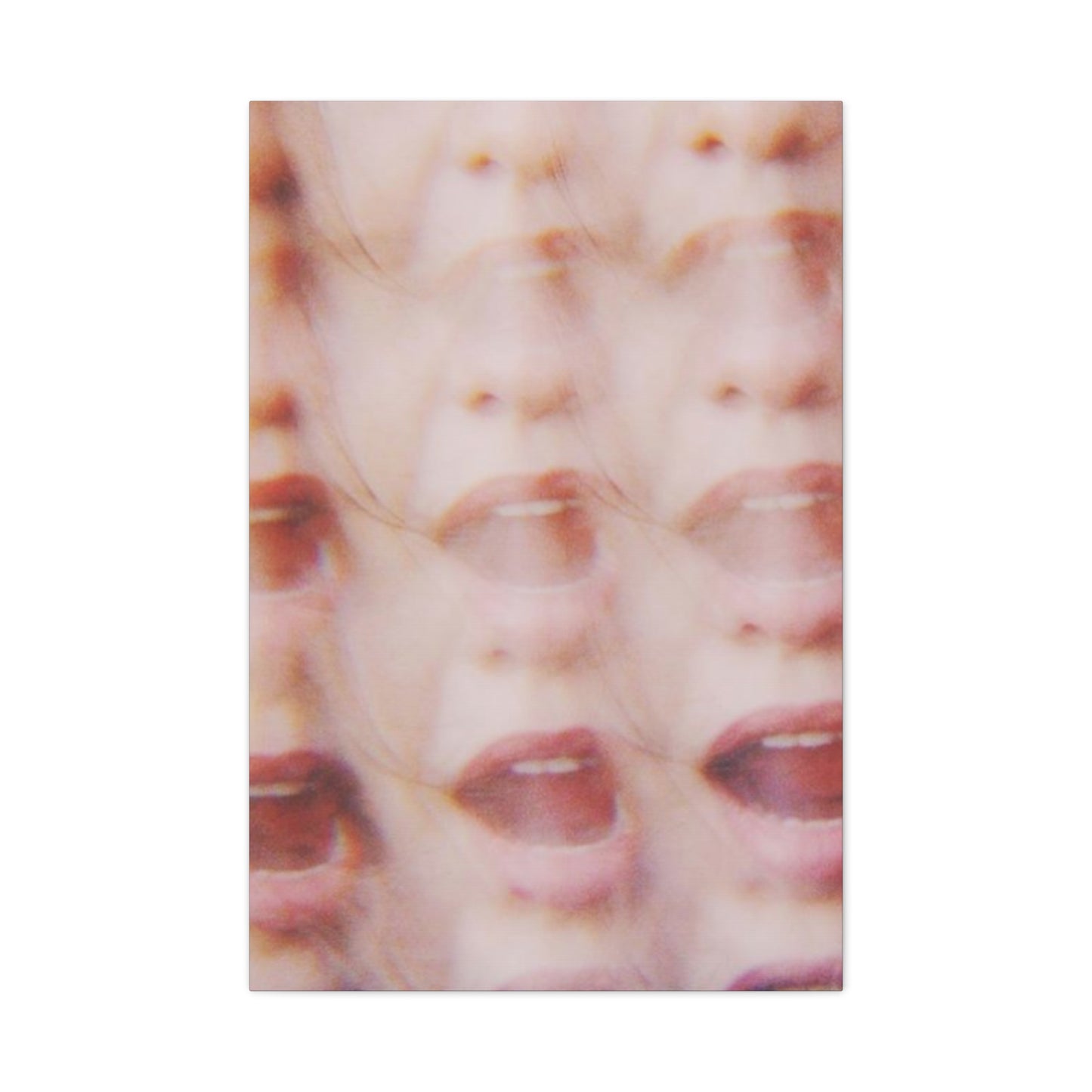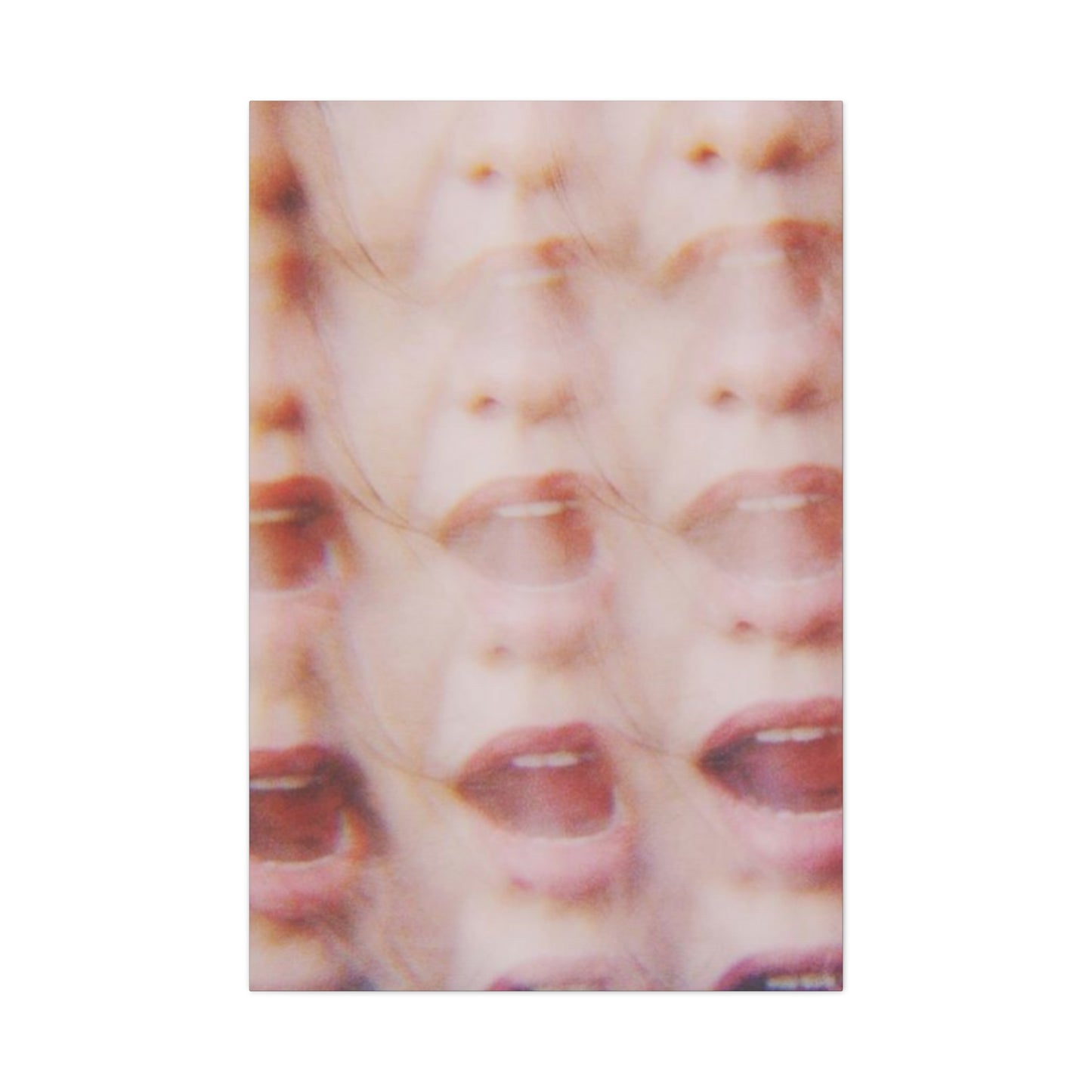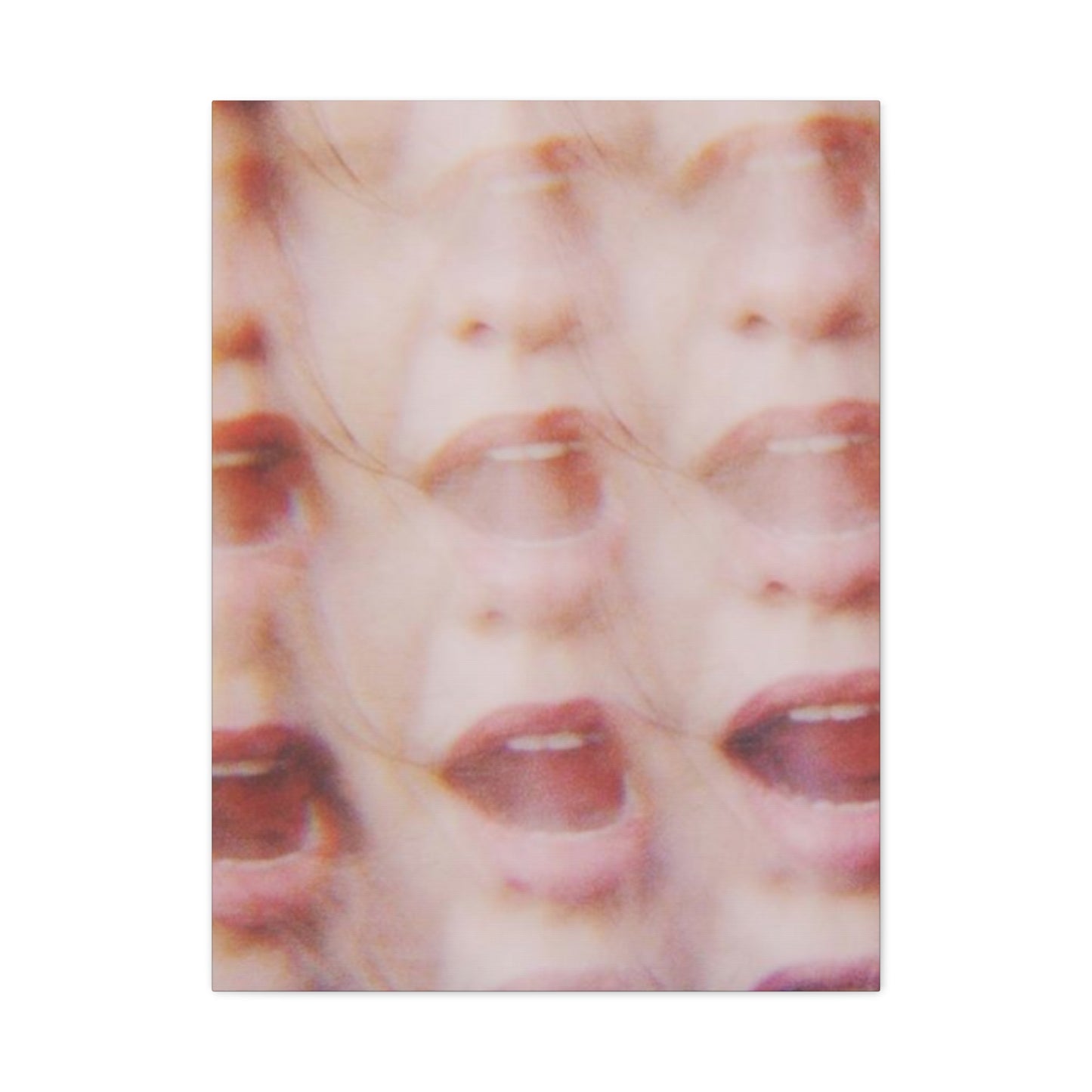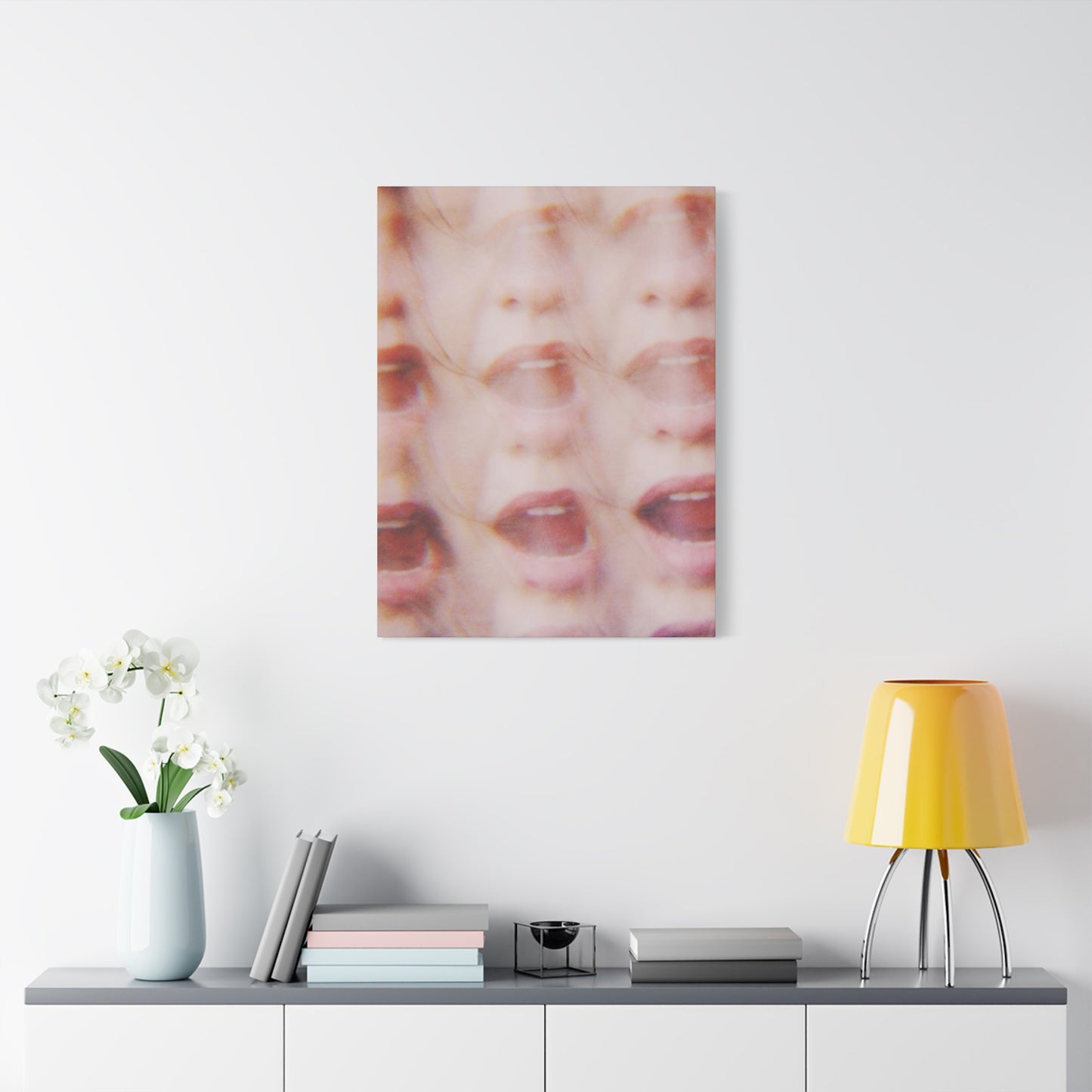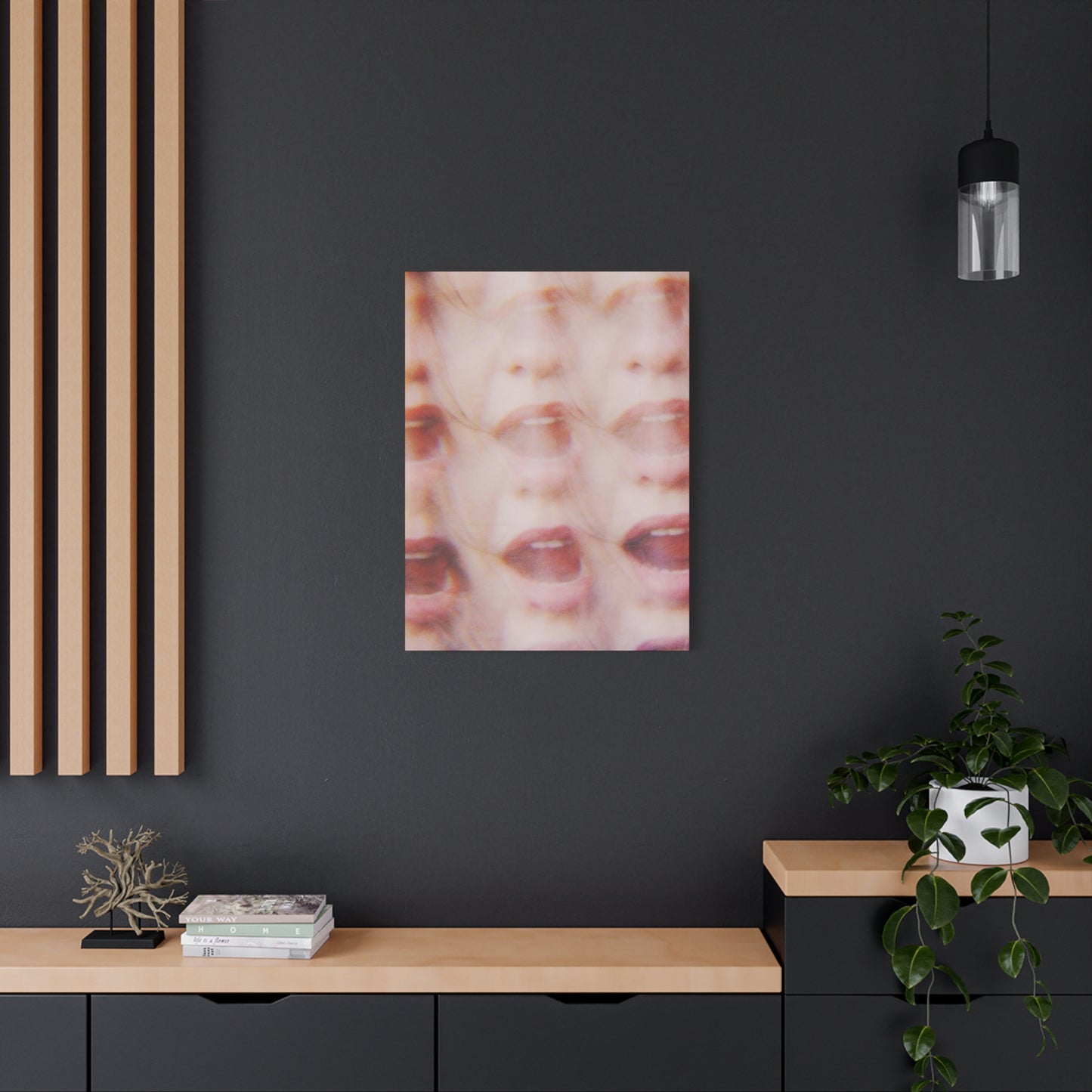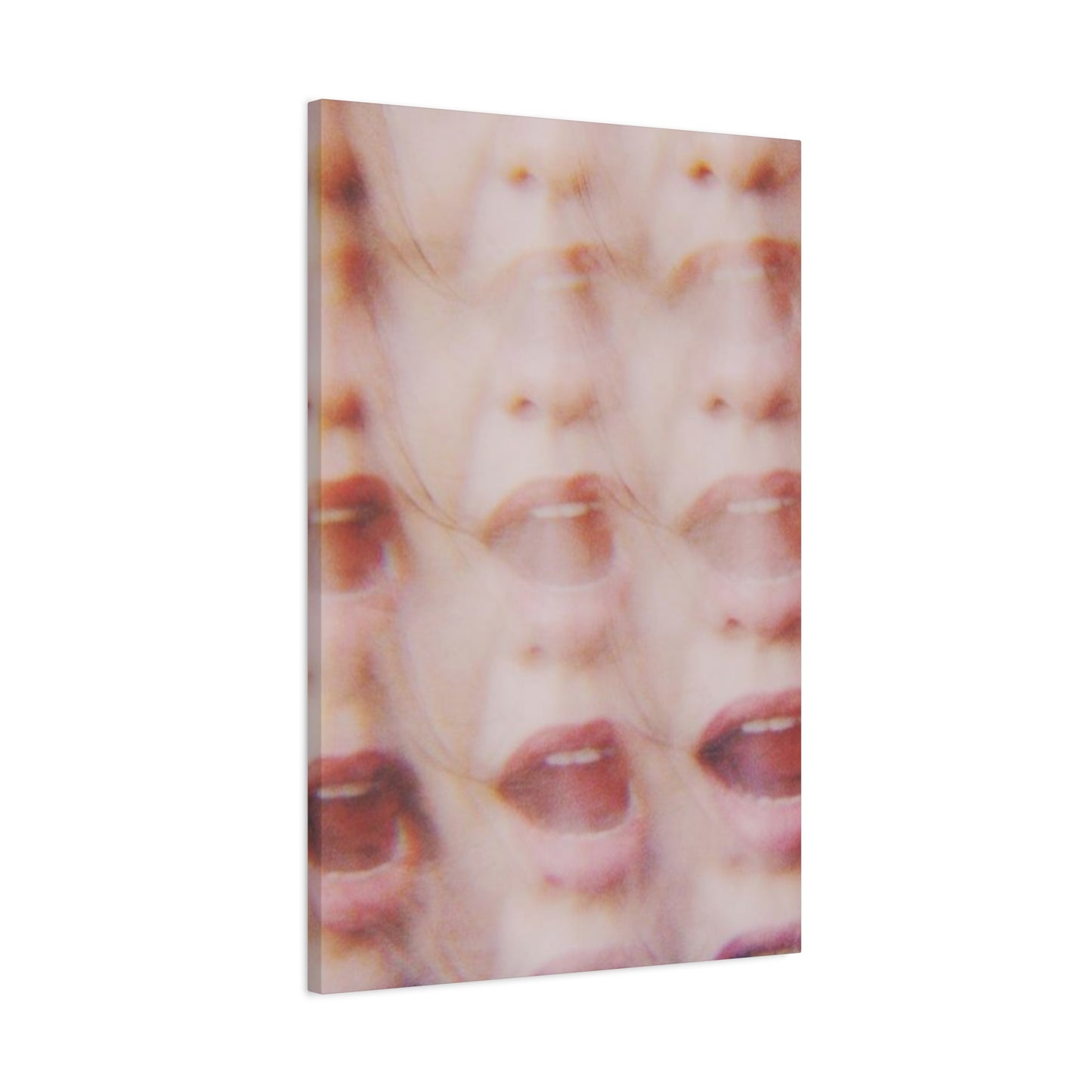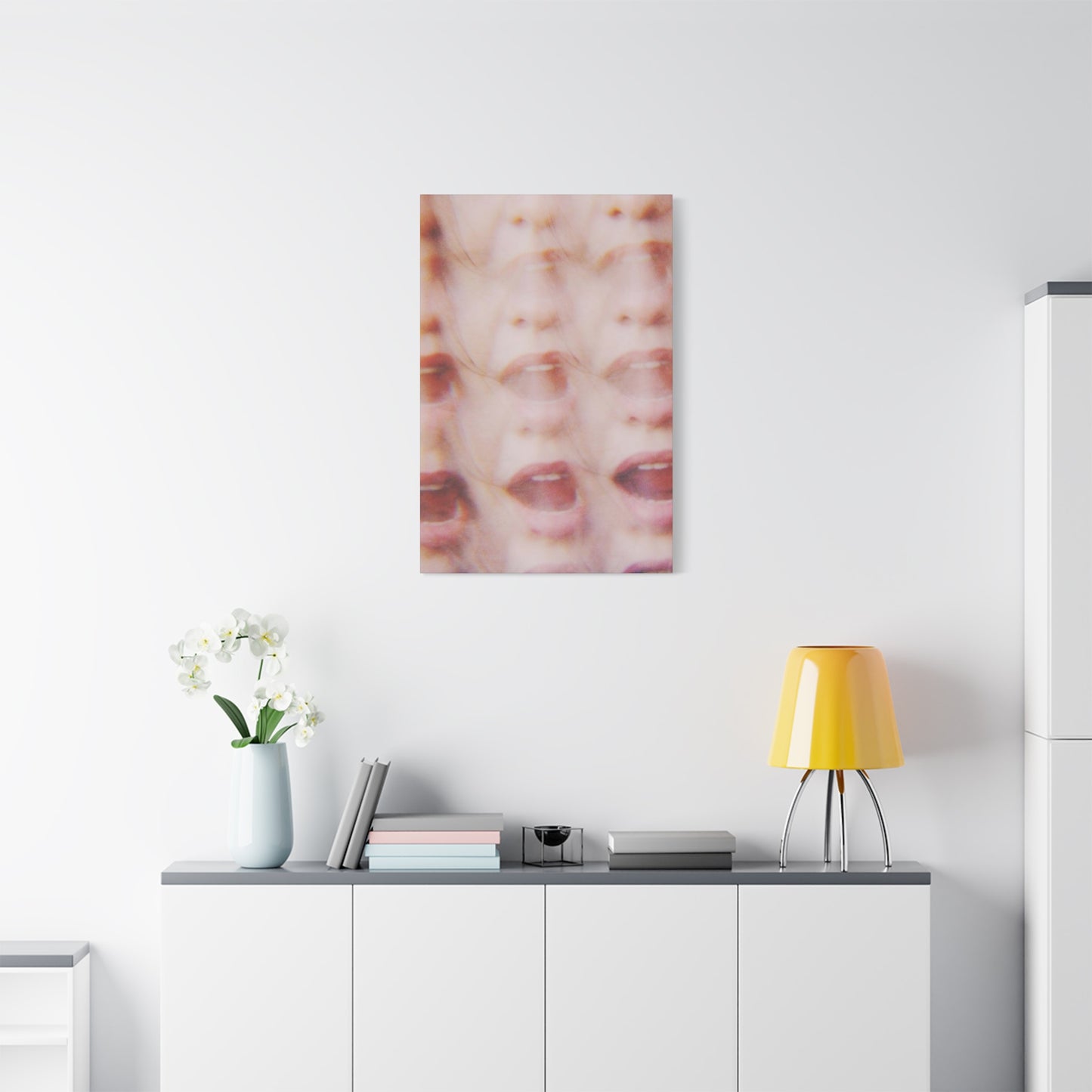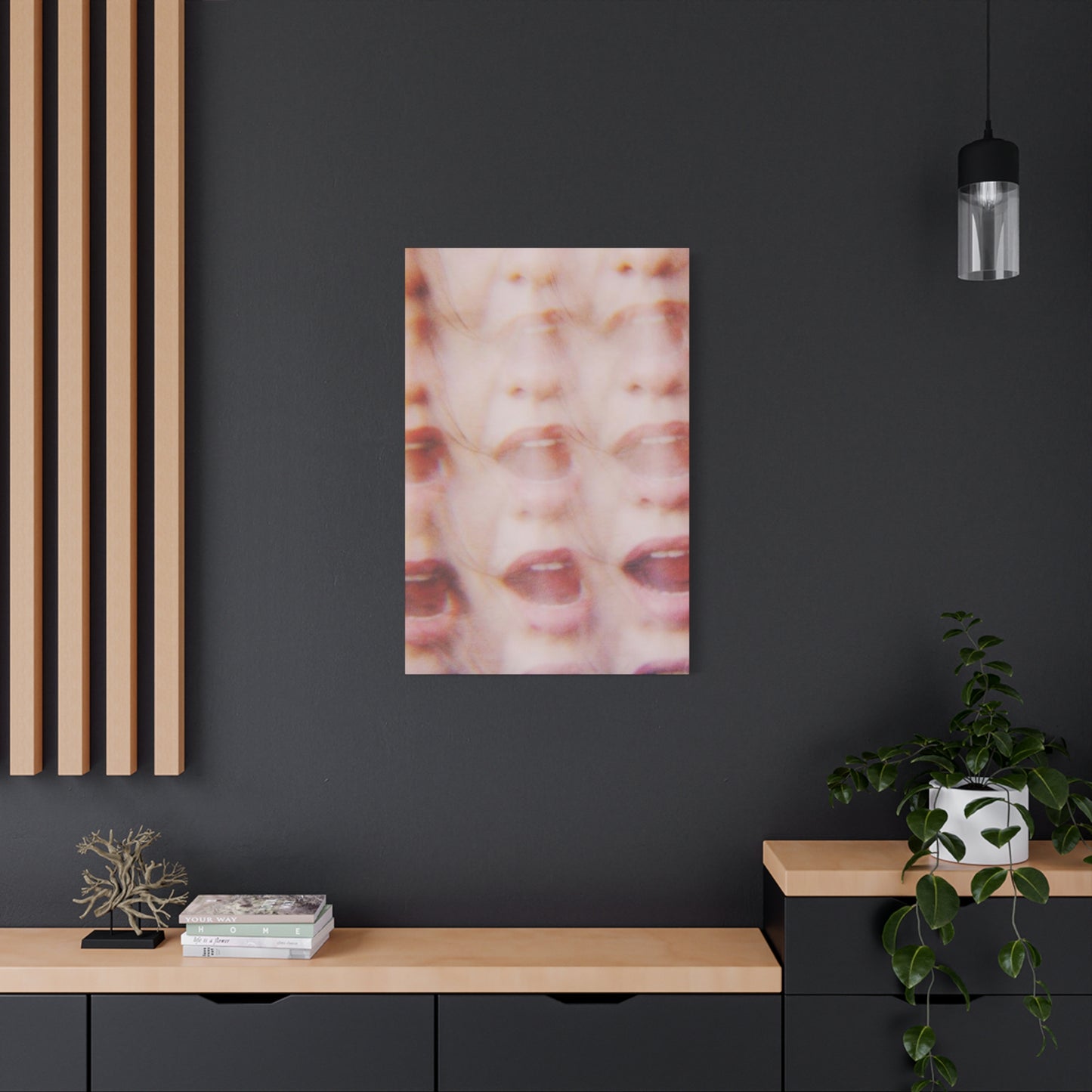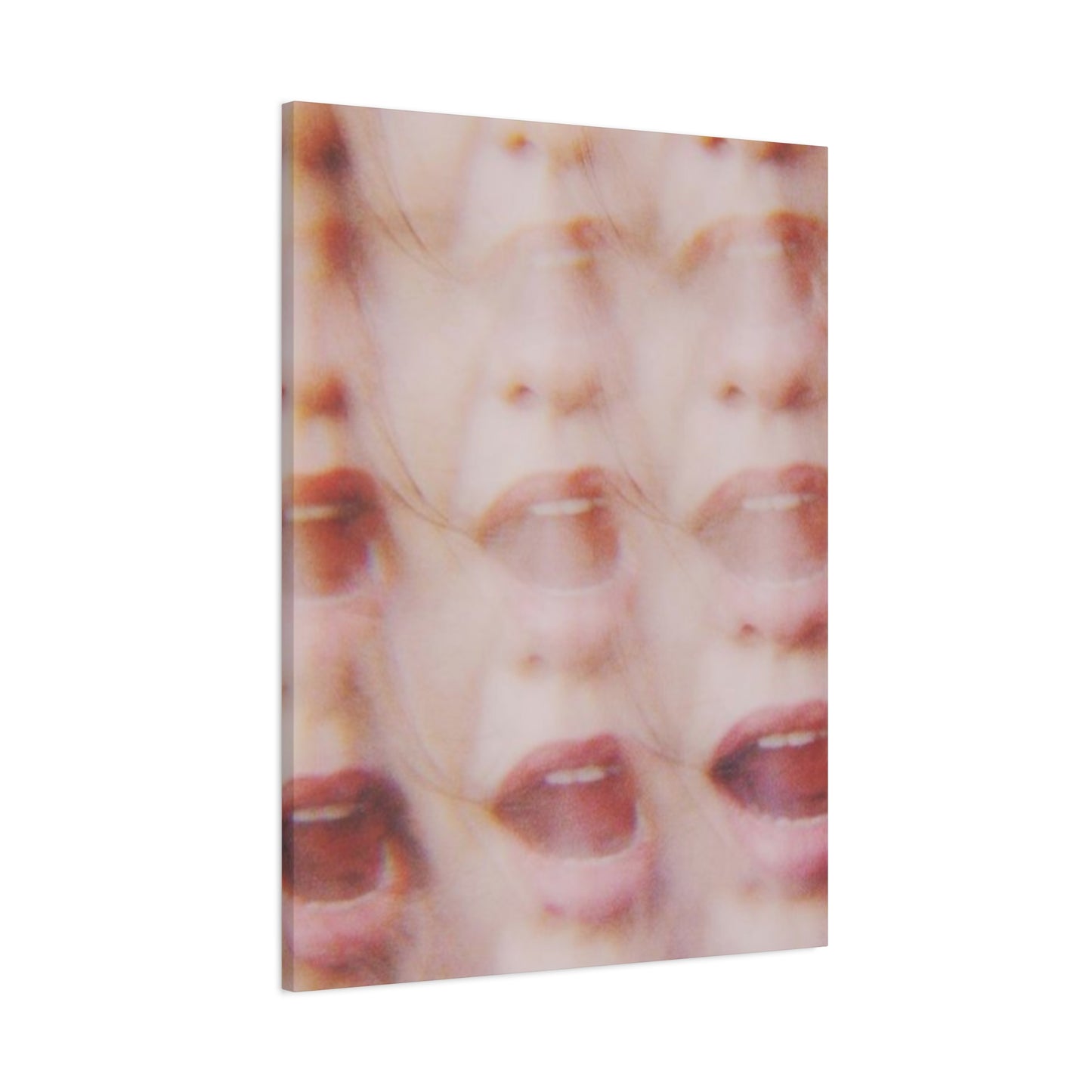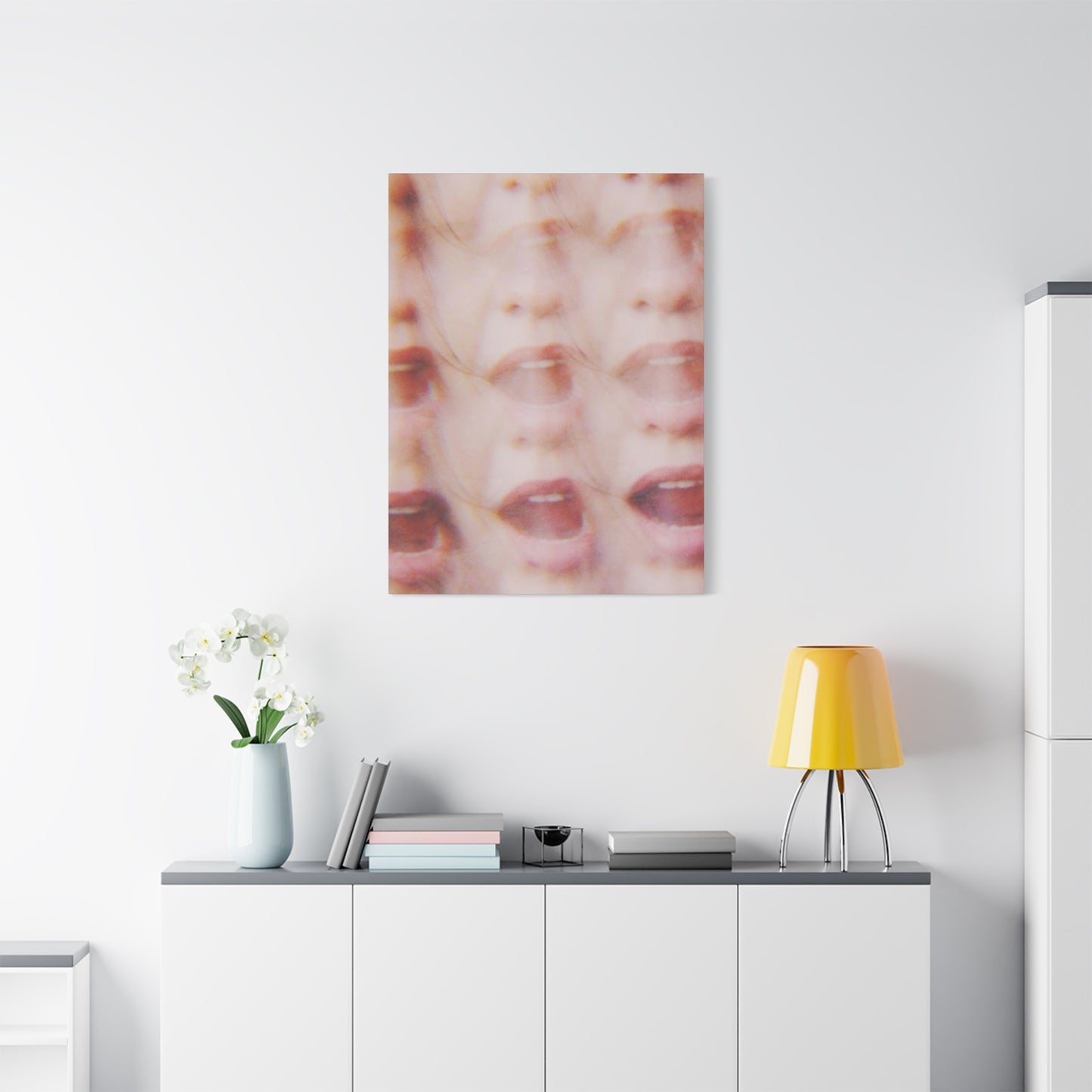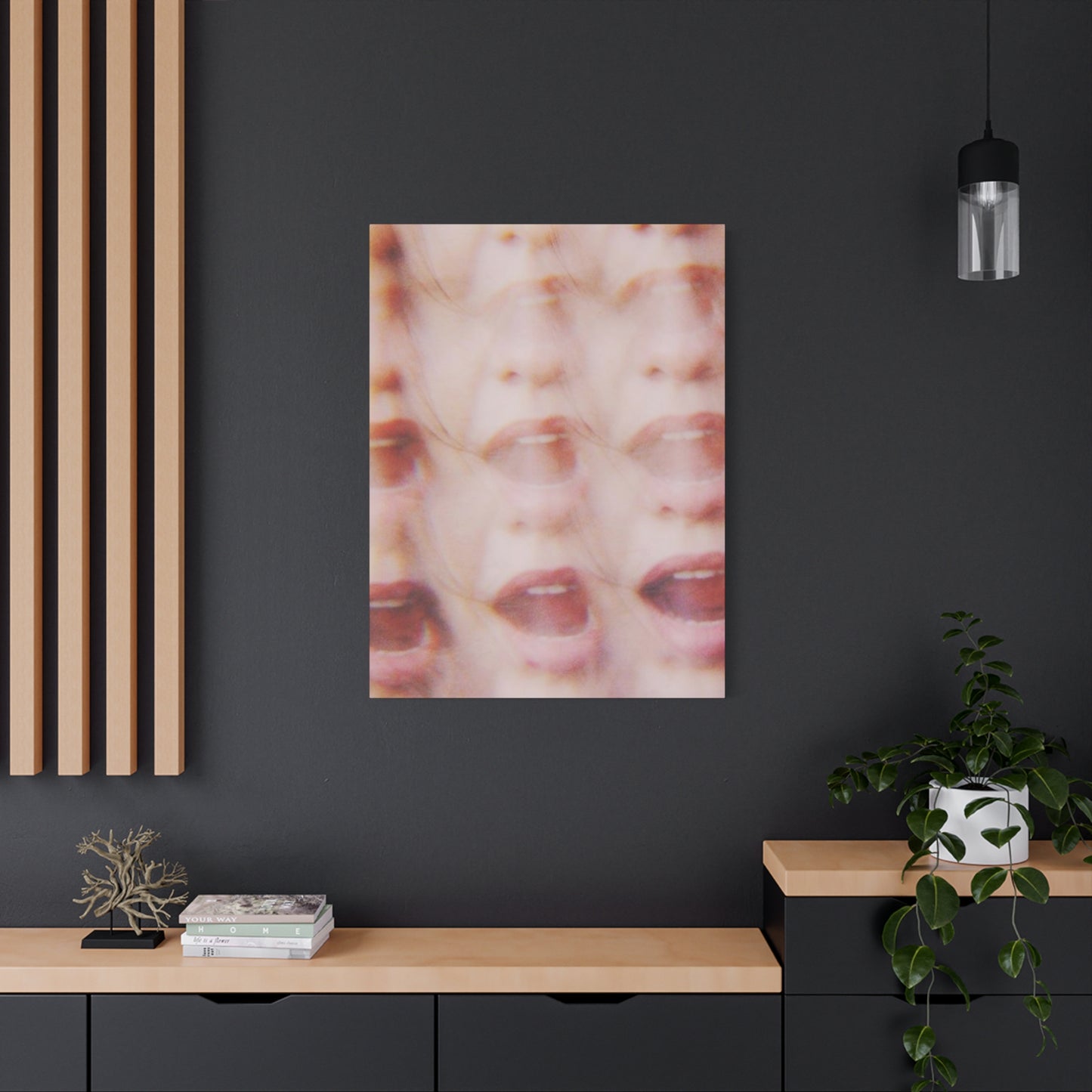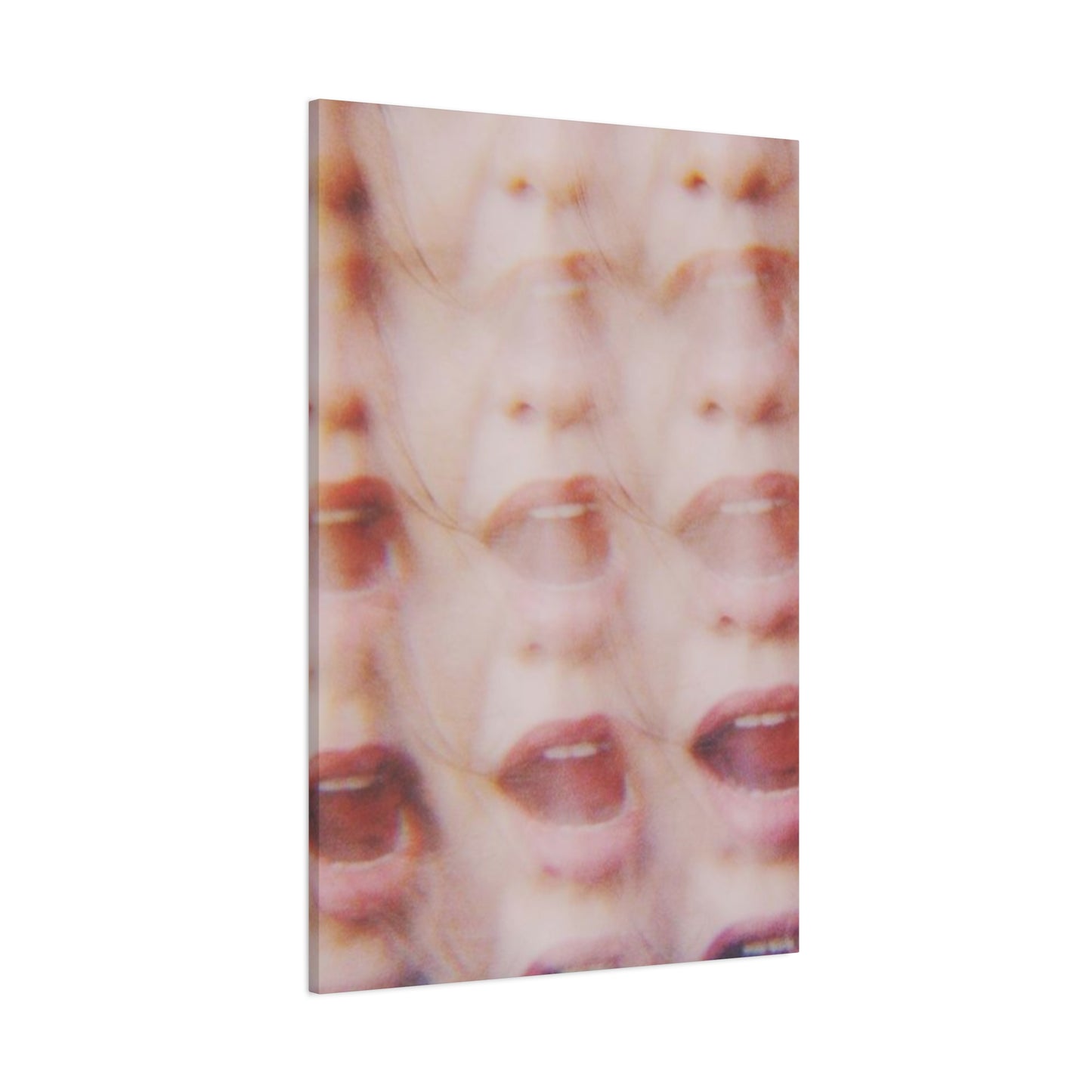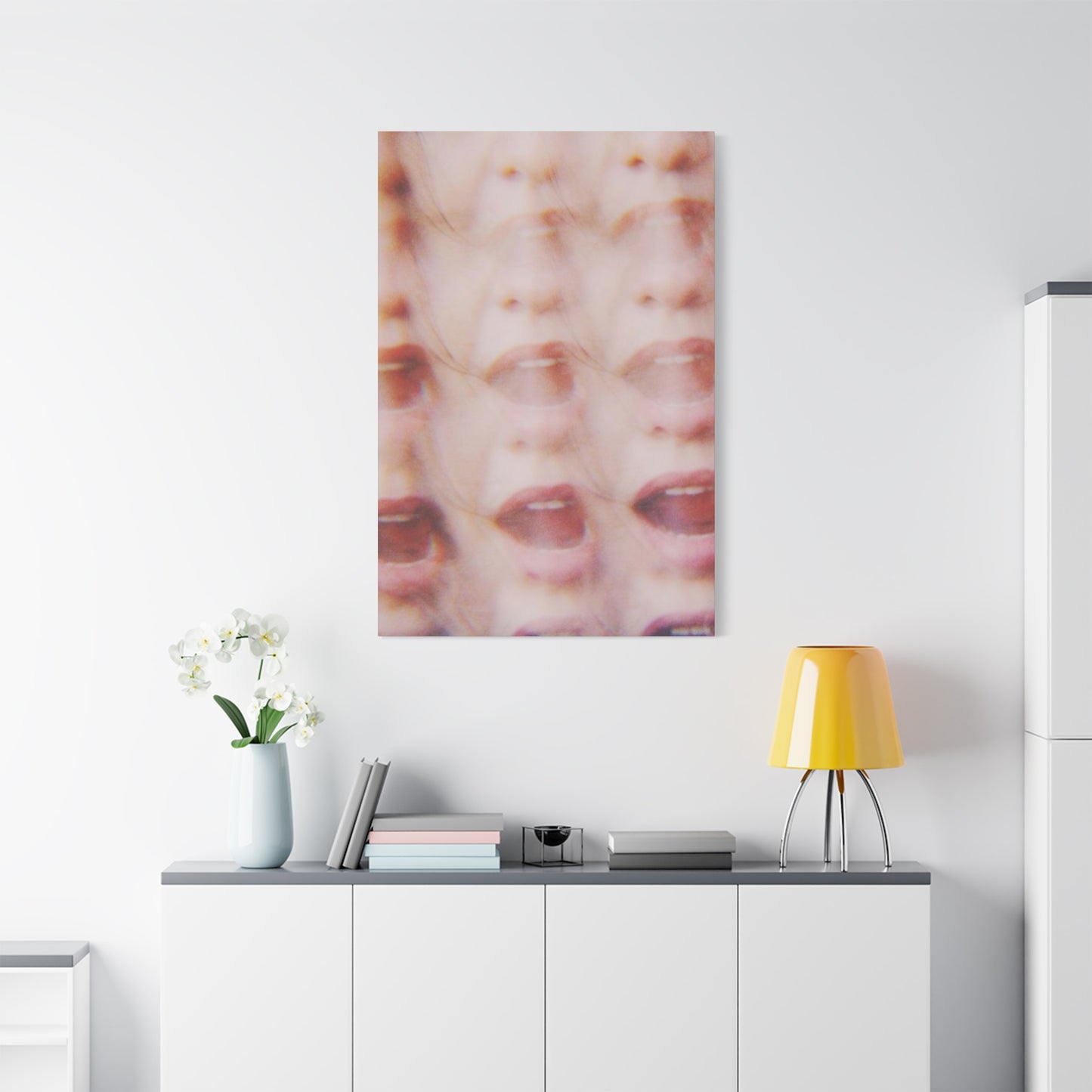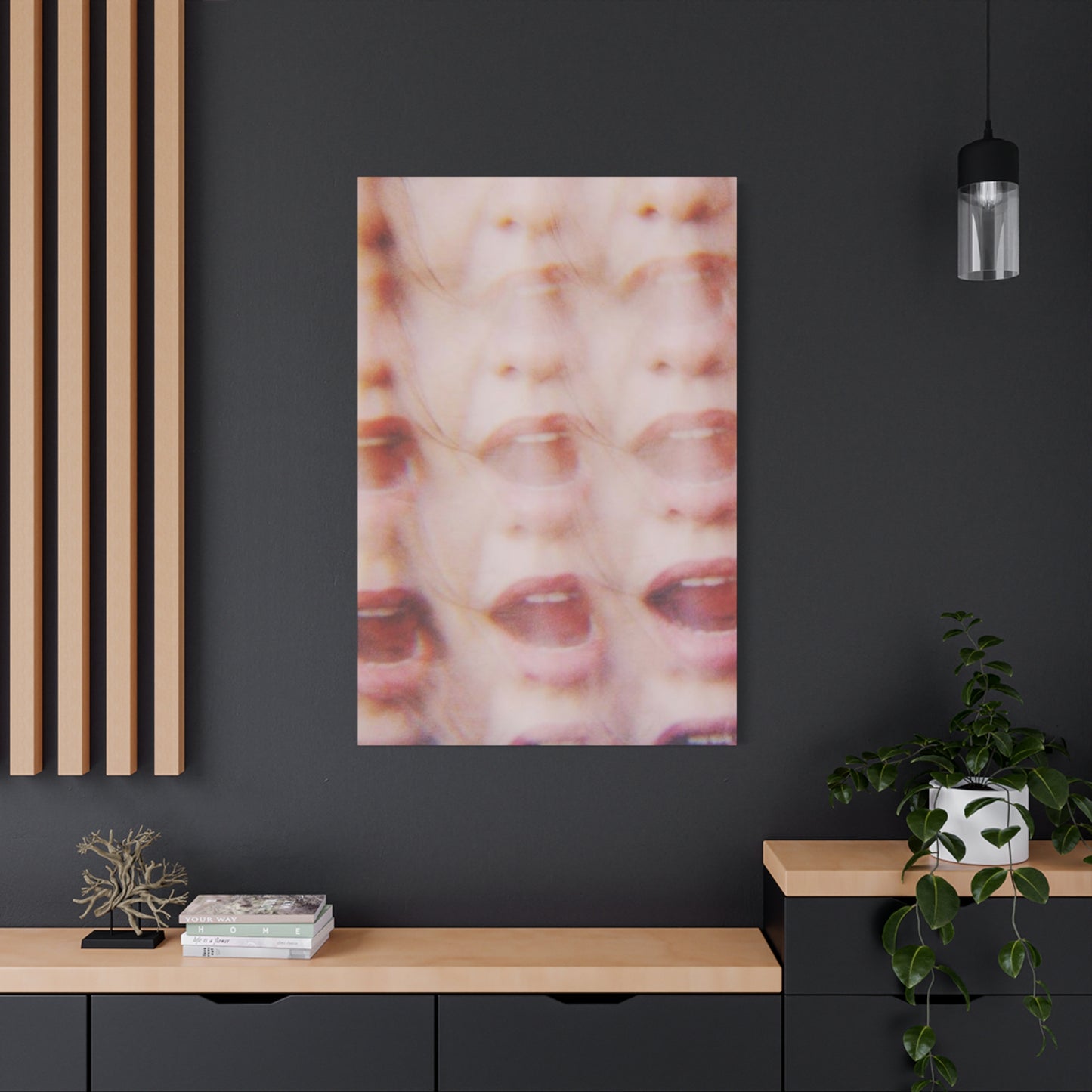Open Mouth Modernism Wall Art Prints: Bold, Expressive Statements for Contemporary Interiors
Open mouth modernism wall art canvas prints represent a fascinating intersection of contemporary artistic expression and bold visual storytelling. This distinctive style features abstract or semi-abstract representations of human faces with prominent open mouths, creating powerful statements about communication, emotion, and human expression in modern society. The artistic movement behind these pieces draws inspiration from various schools of thought, including expressionism, pop art, and minimalist design principles.
These canvas prints typically showcase faces in various emotional states, with the open mouth serving as the focal point of the composition. The imagery can range from subtly suggestive to dramatically bold, often incorporating vibrant color palettes, geometric shapes, and clean lines characteristic of modernist aesthetics. Artists working in this genre frequently explore themes of voice, silence, speech, and the complexities of human communication in an increasingly digital world.
The popularity of open mouth modernism has surged in recent years as homeowners and interior designers seek artwork that makes meaningful statements while maintaining visual appeal. These pieces work exceptionally well in contemporary settings, adding depth and conversation-starting elements to living spaces, offices, galleries, and commercial environments. The versatility of canvas prints allows collectors to acquire museum-quality reproductions at accessible price points, democratizing access to this compelling artistic movement.
What distinguishes open mouth modernism from other contemporary art forms is its direct engagement with viewers through the universal language of facial expression. The open mouth can symbolize numerous concepts including freedom of speech, screaming into the void, joyous laughter, surprise, or vulnerability. This multiplicity of meanings allows each viewer to project their own interpretations onto the artwork, creating deeply personal connections with the pieces they display in their homes.
Historical Background of Modernist Expression Art
The roots of open mouth modernism can be traced back to the early twentieth century when artists began challenging traditional representational techniques. Expressionist painters like Edvard Munch, whose iconic work The Scream featured a figure with mouth agape in existential anguish, laid groundwork for future explorations of facial expression as artistic subject matter. These pioneering artists recognized that the human face, particularly in moments of intense emotion, could communicate universal truths about the human condition.
During the mid-twentieth century, pop art movements further influenced this aesthetic by introducing bold colors, graphic compositions, and commercial printing techniques into fine art. Artists like Roy Lichtenstein and Andy Warhol demonstrated that everyday imagery could be elevated to high art through stylization and recontextualization. Their work showed how simplified facial features and dramatic expressions could create powerful visual impact without requiring photorealistic detail.
The minimalist movements of the nineteen sixties and seventies contributed additional elements to what would become open mouth modernism. Minimalist principles emphasized reduction to essential forms, clean lines, and purposeful use of negative space. These concepts merged with expressionist emotional intensity to create a new visual language that could convey complex feelings through simplified imagery. The combination proved remarkably effective for artists seeking to make statements about human experience in increasingly complex societies.
As digital technology advanced in the late twentieth and early twenty-first centuries, artists gained new tools for creating and distributing their work. Digital illustration software, high-quality printing technologies, and online marketplaces transformed how art could be created, reproduced, and shared. Open mouth modernism flourished in this environment, with artists able to experiment freely with color, composition, and style while reaching global audiences through internet platforms.
Contemporary open mouth modernism reflects all these historical influences while responding to current cultural moments. Issues like social justice, mental health awareness, environmental concerns, and digital communication have become embedded in the visual language of this art form. Artists working today use the open mouth motif to comment on everything from political discourse to personal authenticity, creating works that resonate with audiences navigating complex modern realities.
Design Elements in Open Mouth Canvas Art
The design elements that define open mouth modernism wall art canvas prints follow specific aesthetic principles while allowing considerable creative variation. Color selection plays a crucial role in establishing mood and impact. Many pieces feature bold, saturated hues like vibrant reds, electric blues, sunny yellows, and deep blacks that create strong visual contrast and emotional resonance. These color choices often draw from both pop art sensibilities and traditional color theory, using complementary or analogous color schemes to guide viewer attention and evoke specific feelings.
Composition in open mouth modernism typically centers the face or mouth as the primary focal point, though artists may position elements off-center for dynamic tension. The use of negative space becomes particularly important, with backgrounds often simplified or abstracted to prevent distraction from the main subject. Some artists incorporate geometric patterns, gradients, or textural elements in backgrounds to add visual interest without overwhelming the primary image. The relationship between figure and ground remains carefully balanced to maintain the work's modernist clarity.
Line quality varies considerably across different approaches to this style. Some artists favor clean, vector-like lines that create sharp boundaries between colors and shapes, giving their work a graphic design quality. Others employ more organic, hand-drawn line work that introduces human warmth and imperfection into otherwise stylized compositions. The weight and continuity of lines can dramatically affect how viewers perceive the emotion being expressed, with heavier lines often conveying intensity while lighter lines suggest delicacy or vulnerability.
Stylization of facial features follows modernist principles of simplification and emphasis. Eyes might be reduced to simple circles or ovals, while noses may be suggested through minimal line work or eliminated entirely. The mouth, being the focal element, typically receives the most detailed treatment, with artists carefully rendering teeth, tongue, lips, and the mouth's interior to create maximum impact. This selective detail creates visual hierarchy that guides viewer attention exactly where the artist intends.
Texture adds another dimension to canvas prints, with many modern printing techniques able to simulate brushstrokes, impasto effects, or other surface variations. These textural elements can make reproductions feel more like original paintings, adding tactile interest even in mass-produced prints. Some artists intentionally incorporate visible texture into their digital designs, creating works that acknowledge their medium while celebrating the aesthetic possibilities of contemporary printing technologies.
Popular Styles of Open Mouth Wall Art
Within the broader category of open mouth modernism, several distinct styles have emerged, each with its own aesthetic characteristics and appeal. Pop art influenced open mouth pieces draw heavily from commercial art and advertising aesthetics, featuring bold outlines, flat color areas, and sometimes incorporating Ben-Day dots or halftone patterns. These works often feel playful and accessible, bridging the gap between fine art and popular culture in ways that appeal to broad audiences.
Abstract expressionist approaches to the open mouth motif prioritize emotional intensity over representational accuracy. These pieces might feature distorted proportions, exaggerated features, or fragmented compositions that convey psychological states rather than physical reality. Colors may be applied in loose, gestural ways, and the overall effect tends toward the visceral and immediate. Such works suit collectors who appreciate art's ability to manifest internal emotional landscapes.
Minimalist open mouth art reduces the subject to its most essential elements, often using limited color palettes and simple geometric forms. A single line might suggest a face outline while another indicates the open mouth, with negative space doing much of the compositional work. These pieces embody the "less is more" philosophy, creating maximum impact through restraint and careful editing. They work exceptionally well in contemporary interiors where clean lines and uncluttered spaces prevail.
Surrealist inspired open mouth imagery incorporates unexpected elements, dreamlike juxtapositions, or impossible scenarios that challenge viewer expectations. An open mouth might contain landscapes, celestial objects, or abstract patterns rather than a traditional interior. These works invite deeper contemplation and interpretation, rewarding viewers who spend time engaging with their layered meanings. They appeal to collectors who value art's capacity to transport consciousness beyond everyday reality.
Graphic design style open mouth art emphasizes clarity, readability, and visual impact through techniques borrowed from commercial design. These pieces often feature high contrast, limited color palettes, and compositions designed for immediate comprehension. The aesthetic shares DNA with poster design, logo creation, and digital illustration, making these works feel contemporary and relevant to audiences comfortable with visual culture of digital media.
Choosing the Right Size for Your Space
Selecting appropriate dimensions for open mouth modernism wall art canvas prints requires careful consideration of both the artwork itself and the space where it will be displayed. Small prints measuring around twelve by sixteen inches or sixteen by twenty inches work beautifully as accent pieces within gallery walls or on narrow wall sections. These sizes allow the artwork to contribute to overall decor without overwhelming other elements, making them ideal for bedrooms, bathrooms, hallways, or areas where multiple artworks share visual real estate.
Medium-sized canvases ranging from twenty by thirty inches to thirty by forty inches serve as focal points without dominating entire rooms. These dimensions suit living rooms, dining areas, home offices, and bedrooms where the artwork should command attention but still leave room for furniture, windows, and other design elements. Medium prints strike an excellent balance, being large enough to make statements while remaining proportional to typical residential wall spaces.
Large format prints measuring forty by sixty inches or larger create dramatic impact and work best on expansive wall surfaces. These substantial pieces become primary focal points around which entire rooms can be designed. They suit open concept living areas, above sofas or beds, in lobbies, or anywhere bold statements enhance rather than overwhelm the space. When selecting large prints, ensure adequate viewing distance exists, as pieces this size need space to be appreciated properly.
Vertical, horizontal, and square orientations each create different visual effects and suit different applications. Vertical pieces draw eyes upward, making rooms feel taller and working well in narrow spaces or beside tall furniture. Horizontal prints emphasize width, complementing low furniture like sofas and console tables while making walls feel broader. Square formats offer balanced, centered compositions that work nearly anywhere and pair beautifully when displayed in multiples.
The relationship between artwork size and wall dimensions follows general design principles, with art typically occupying sixty to seventy-five percent of the available wall width for solo pieces. When hanging above furniture, the print should be narrower than the furniture piece itself, usually by several inches on each side. Considering ceiling height also matters, as standard eight-foot ceilings accommodate different proportions than ten or twelve-foot ceilings common in lofts or commercial spaces.
Placement Ideas for Maximum Impact
Strategic placement of open mouth modernism wall art canvas prints dramatically affects their visual impact and how they interact with surrounding decor. Living room walls offer prime real estate for these statement pieces, with the wall behind the sofa being perhaps the most traditional yet effective location. Here, the artwork becomes the room's visual anchor, visible from multiple seating positions and establishing the space's aesthetic tone. Centering the piece horizontally while hanging it at eye level creates balanced, professional presentation.
Bedroom walls provide more intimate settings for open mouth art, where the pieces can reflect personal taste without needing to accommodate diverse viewer preferences. Above the bed remains a classic choice, creating a focal point visible upon entering the room. However, placing art on walls facing the bed allows for contemplation from comfortable reclining positions. Bedroom art can be more personal or provocative since fewer guests typically view these private spaces.
Home office walls benefit enormously from art that stimulates creativity and intellectual engagement. Open mouth modernism pieces exploring themes of communication, expression, or voice feel particularly appropriate in work environments. Positioning art within the visual field while working but not directly behind computer monitors prevents distraction while providing visual interest during moments of reflection. These pieces can serve as inspiration during creative tasks or reminders of larger purposes behind daily work.
Dining areas create opportunities for conversation-starting artwork that guests can admire during meals. Open mouth pieces exploring communication themes feel especially apropos in spaces dedicated to gathering and conversation. Dining room art should be positioned where diners can appreciate it without craning necks, typically on walls visible from seating positions. The social nature of dining spaces makes them perfect for bolder, more provocative pieces that might spark interesting discussions.
Entryways and hallways, often neglected in decorating schemes, provide excellent opportunities for impactful art displays. These transitional spaces allow for bolder choices since viewers typically pass through quickly rather than spending extended time. Open mouth art in entryways makes strong first impressions, setting aesthetic expectations for the rest of the home. Hallway galleries featuring multiple open mouth pieces in varying styles or sizes create cohesive visual journeys through transitional spaces.
Framing Options for Canvas Prints
While canvas prints often come gallery-wrapped and ready to hang without additional framing, various framing options can enhance their presentation and protection. Gallery-wrapped canvases feature printed images extending around the edges of stretcher bars, creating finished appearances without frames. This modern presentation style suits contemporary interiors perfectly, allowing the artwork to float against walls with clean, uninterrupted edges. The casual sophistication of unframed canvas appeals to minimalist sensibilities.
Floating frames add subtle dimension and protection while maintaining contemporary aesthetics. These frames attach to canvas backs, creating shallow borders that make artwork appear to float within the frame. A small gap between canvas and frame creates shadow lines adding depth and visual interest. Floating frames come in various finishes from natural woods to painted metals, allowing customization to match existing decor while providing physical protection against bumps and environmental factors.
Traditional frames with mats create more formal presentations suitable for classical or transitional interiors. While less common for modern canvas prints, this approach can elevate artwork's perceived value and create connections with other framed pieces in the space. Mat borders in neutral colors focus attention on the artwork while providing breathing room between image and frame. This treatment works particularly well for smaller prints or when creating formal gallery wall arrangements.
Custom frames allow complete control over materials, finishes, and dimensions, enabling perfect matches with specific decor schemes. Working with professional framers ensures proper mounting techniques that protect artwork while achieving desired aesthetic effects. Custom framing represents an investment but adds significant value for particularly meaningful pieces or when exact color matching with room elements is important. The personalization possible through custom framing makes each piece truly unique.
Shadow box frames create three-dimensional presentations with substantial depth between artwork and frame glass. While less common for canvas prints than paper works, shadow boxes can create dramatic effects especially when combined with lighting. The depth adds physical presence making pieces feel more sculptural than purely pictorial. This approach suits collectors wanting to make bold statements with their most important pieces.
Pairing Open Mouth Art with Interior Styles
Open mouth modernism wall art canvas prints demonstrate remarkable versatility across various interior design styles when selected and positioned thoughtfully. Contemporary interiors provide natural homes for these pieces, with their clean lines, neutral backgrounds, and emphasis on statement elements aligning perfectly with modern art aesthetics. Pairing bold open mouth prints with minimalist furniture in materials like glass, metal, and leather creates cohesive, sophisticated spaces where art can truly shine as the primary decorative element.
Industrial style spaces benefit from the urban edge and raw emotion often present in open mouth art. Exposed brick walls, concrete surfaces, and metal fixtures provide excellent backdrops for pieces featuring bold graphics and limited color palettes. The combination of rough architectural elements with refined artistic expression creates compelling contrasts that define successful industrial design. Black and white or monochromatic open mouth prints feel particularly at home in these settings.
Scandinavian design principles emphasizing simplicity, functionality, and connection to nature seem initially at odds with bold mouth imagery, yet careful selection creates beautiful synthesis. Choosing open mouth art in softer color palettes featuring blues, greens, or earth tones maintains Scandinavian serenity while adding necessary visual interest. The clean lines characteristic of both Scandinavian design and modernist art create natural harmony when combined thoughtfully.
Bohemian or eclectic interiors embrace mixing patterns, textures, and art styles, making them wonderfully receptive to open mouth modernism. These maximalist spaces allow for more experimental, colorful, or surrealist interpretations of the open mouth motif. Layering open mouth prints among textiles, plants, and collected objects creates rich visual environments that celebrate individuality and artistic expression. The anything-goes nature of bohemian style removes constraints, encouraging creative combinations.
Mid-century modern interiors share DNA with modernist art movements, making them ideal settings for open mouth pieces. The period's characteristic furniture designs featuring organic curves, tapered legs, and quality craftsmanship complement modernist art's emphasis on form and function. Color palettes from mid-century design including olive greens, burnt oranges, and teal blues often appear in open mouth art as well, facilitating cohesive room designs that feel authentically retro-modern.
Creating Gallery Walls with Mouth Art
Gallery walls featuring multiple open mouth modernism pieces create dynamic, personalized displays that showcase artistic range while maintaining thematic unity. Planning successful gallery walls begins with selecting pieces sharing some common elements while varying in others. Consistency in color palette with variation in composition creates harmony without monotony. Alternatively, maintaining similar compositions across pieces while experimenting with different color schemes generates different effects.
Layout planning prevents costly mistakes and ensures balanced final arrangements. Arranging pieces on the floor or creating paper templates matching artwork dimensions allows experimentation before committing to wall holes. Grid layouts featuring evenly spaced pieces create orderly, museum-like presentations suitable for formal spaces. Salon-style arrangements with varied spacing and orientations feel more casual and collected, working beautifully in eclectic or bohemian interiors.
Mixing sizes adds visual interest and prevents gallery walls from appearing static or predictable. Combining large anchor pieces with smaller supporting works creates hierarchies guiding viewer attention through the display. Typically, larger pieces occupy central or lower positions with smaller works surrounding and supporting them. This arrangement feels natural and balanced while accommodating various print sizes and orientations.
Maintaining consistent spacing between pieces creates professional appearances regardless of layout style. Standard spacing ranges from two to six inches depending on available wall space and desired effect. Closer spacing creates unified, cohesive displays where individual pieces merge into larger compositions. Wider spacing allows each work to breathe independently, emphasizing individual merit while maintaining group relationships.
Incorporating other elements like mirrors, shelves, or sculptural objects can enhance gallery walls when executed carefully. These additions should complement rather than compete with artwork, maintaining open mouth pieces as primary focal points. Small shelves holding plants or decorative objects add three-dimensional interest, while mirrors expand perceived space and reflect light. The key lies in maintaining balance and preventing walls from feeling cluttered or chaotic.
Lighting Techniques for Canvas Art
Proper illumination dramatically affects how open mouth modernism wall art appears and influences the ambiance it creates within spaces. Natural light provides the most accurate color representation but varies throughout days and seasons, creating different moods at different times. Positioning artwork where indirect natural light illuminates it during daylight hours allows appreciation of true colors and details without harmful direct sun exposure.
Track lighting offers flexible, adjustable illumination perfect for highlighting artwork. Positioning track heads to cast light at thirty-degree angles from above prevents glare while evenly illuminating canvas surfaces. Adjustable heads accommodate repositioning artwork or trying different arrangements without rewiring. Track systems with dimmable features allow customization of light intensity for different occasions and times of day.
Picture lights mounted directly above artwork provide focused, elegant illumination especially suitable for traditionally decorated spaces. Modern LED picture lights consume minimal energy while providing excellent light quality and longevity. Width should approximately match artwork width for balanced coverage. These fixtures add sophistication while ensuring pieces remain visible and impressive even in low ambient light conditions.
Recessed ceiling lights create ambient illumination that can highlight artwork when properly positioned. Adjustable recessed fixtures allow precise aiming at canvas surfaces, while fixed lights work when positioned appropriately during installation. This approach creates clean, minimalist lighting without visible fixtures drawing attention from artwork. However, it requires planning during construction or renovation to ensure optimal placement.
Wall washing techniques using upward-pointing floor lights or wall-mounted sconces create dramatic effects by illuminating entire walls including mounted artwork. This indirect approach produces soft, even lighting that feels sophisticated and gallery-like. Wall washing works particularly well for large canvas prints or gallery wall arrangements where lighting individual pieces becomes impractical. The technique creates ambient illumination while showcasing art as integral components of architectural space.
Psychological Impact of Expressive Face Art
The psychological effects of displaying open mouth modernism wall art extend beyond aesthetic appreciation into deeper realms of emotional influence and mental state. Faces, particularly expressive ones, trigger automatic neurological responses rooted in our evolutionary heritage. Mirror neurons fire when observing facial expressions, creating embodied understanding of depicted emotions. This neurological phenomenon means that open mouth art depicting joy might elevate viewer mood, while pieces showing distress could evoke empathy or discomfort.
The open mouth specifically carries powerful symbolic weight across cultures and contexts. It represents vulnerability through the exposure of the body's interior, creating intimacy or discomfort depending on presentation. Open mouths suggest communication, whether through speech, song, laughter, or screams, making them inherently about connection and expression. In spaces where communication matters, like offices or dining rooms, these symbols can subtly reinforce the importance of voice and authentic expression.
Color psychology combines with facial expression to amplify emotional impact. Warm colors like reds and oranges combined with open mouth imagery create energizing, activating effects suitable for social spaces or creative environments. Cool colors like blues and greens paired with the same motif might encourage introspection or calm, working well in bedrooms or meditation spaces. Understanding these interactions allows for intentional creation of desired psychological atmospheres.
The abstract or stylized nature of modernist open mouth art creates psychological distance that makes intense imagery more comfortable to live with than photorealistic alternatives. Stylization allows viewers to engage with powerful emotions and themes without overwhelming their daily experience. This distance permits exploration of challenging concepts like anxiety, isolation, or existential questions within home environments where complete comfort remains important.
Personal projection and interpretation mean different viewers derive different psychological benefits from identical pieces. Some might see joy and celebration in an open mouth, while others perceive anxiety or overwhelm. This subjectivity makes selecting artwork deeply personal, as the psychological impact depends heavily on individual associations, experiences, and current mental states. Living with art that resonates personally creates ongoing sources of meaning and emotional support.
Combining Multiple Art Pieces
Creating cohesive displays incorporating open mouth modernism wall art alongside other artwork types requires thoughtful curation and spatial planning. Successful combinations share connecting elements that create visual relationships without demanding identical aesthetics. Common color palettes provide strong unifying forces, allowing pieces with different subjects and styles to coexist harmoniously. Selecting artworks sharing two or three key colors while varying in composition creates unified yet diverse displays.
Thematic connections offer another approach to combining disparate pieces. Pairing open mouth art with other works exploring human experience, communication, or emotional expression creates intellectual cohesion that transcends stylistic differences. These thematic galleries tell visual stories, with each piece contributing to larger narratives about chosen subjects. Viewers appreciate the thoughtful curation that creates meaning beyond individual artworks.
Varying media types adds textural interest to mixed-artwork displays. Combining canvas prints with framed photographs, watercolors, or mixed-media pieces creates layered, collected appearances that feel personal rather than decorator-perfect. The different materials and presentation styles add depth and complexity, preventing displays from appearing too matchy or sterile. This approach particularly suits eclectic or bohemian interiors celebrating diversity.
Scale variation prevents monotony while creating visual hierarchy. Mixing large statement pieces with smaller supporting works guides attention through displays while accommodating different wall spaces and budgets. Larger pieces anchor arrangements while smaller works fill spaces and add detail interest. This layering creates sophisticated compositions that reward both quick glances and extended viewing.
Professional artwork interspersed with personal items like family photos, children's art, or travel souvenirs creates meaningful displays that reflect unique life stories. Open mouth modernism pieces elevate these personal collections, adding artistic sophistication while remaining part of larger narratives. This combination honors both aesthetic appreciation and personal history, creating displays that feel authentic and emotionally resonant.
Cultural Significance of Mouth Imagery
The mouth holds profound cultural significance across human societies, making open mouth modernism artworks resonate with deep-seated symbolic associations. As the primary organ for speech, the mouth represents communication, voice, and the power to name reality through language. In cultures worldwide, controlling one's mouth and the words emerging from it indicates wisdom, while reckless speech signifies immaturity or danger. Open mouth art thus engages with fundamental questions about when to speak, when to remain silent, and what voices deserve hearing.
The mouth's role in consumption and survival creates additional symbolic layers. We take in nourishment, medicine, and pleasure through our mouths, making them sites of vulnerability and satisfaction. Open mouth imagery can suggest hunger whether physical, intellectual, or spiritual, speaking to human needs that extend beyond mere sustenance. This symbolism resonates especially in contemporary societies grappling with consumption, desire, and what truly nourishes us.
Across artistic traditions, the open mouth has signaled various states from ecstasy to agony. Religious art depicting saints in mystical rapture often features open mouths suggesting divine communication or overwhelming spiritual experience. War photography and protest imagery frequently capture open mouths mid-scream, documenting human responses to injustice and suffering. Open mouth modernism inherits these traditions while adapting them to contemporary contexts and aesthetic sensibilities.
In psychological terms, the open mouth represents boundary dissolution between interior and exterior selves. The mouth cavity, normally hidden, becomes visible and vulnerable when opened. This exposure can signify authenticity and transparency or represent invasion and violation depending on context. Contemporary artists working with open mouth imagery often explore these tensions between self-revelation and self-protection in an age demanding constant self-disclosure through social media.
Cultural differences in displaying emotion through facial expression affect how open mouth art is received across different societies. Cultures emphasizing emotional restraint might find open mouth imagery more confrontational or uncomfortable than cultures celebrating emotional expressiveness. However, the universality of facial expressions as communication tools means open mouth art transcends many cultural boundaries, speaking to shared human experiences regardless of specific cultural conditioning.
Digital Art vs Traditional Canvas Prints
The distinction between digitally created open mouth modernism and traditionally painted works affects both creation processes and final aesthetic outcomes. Digital artwork offers artists unprecedented control, flexibility, and efficiency. Design software allows infinite experimentation without wasting materials, easy correction of mistakes, and precise manipulation of every visual element. These advantages enable complex compositions and color experiments that would prove time-consuming or impossible through traditional painting methods.
Traditional painting techniques bring unique qualities that many collectors and artists value despite digital advantages. Physical paint application creates textural variations, subtle color mixing, and happy accidents that contribute organic warmth to finished works. The artist's hand remains visible through brushstrokes, impasto effects, and other material traces that connect viewers to creation processes. Some collectors prize these qualities as markers of authenticity and artistic labor.
Canvas print technology bridges these approaches by reproducing digitally created or photographed artwork on physical canvas with remarkable fidelity. Modern printing processes achieve color accuracy and detail resolution that make reproductions nearly indistinguishable from originals for most viewers. Texture can be added through specialized printing techniques or post-production applications of varnish and gel mediums, creating hybrid works combining digital precision with physical presence.
The accessibility of digital creation democratizes artistic production, enabling more people to create and share artwork without expensive materials or studio space requirements. This democratization has exploded the availability of open mouth modernism, with thousands of artists worldwide contributing to the genre. The result is unprecedented variety and innovation but also challenges in distinguishing quality work from mediocre productions in oversaturated markets.
Collectors must navigate questions about value and authenticity in environments where digital files can be infinitely reproduced. Limited edition prints numbered and signed by artists maintain scarcity creating value, while open edition prints remain affordable but less exclusive. Understanding these distinctions helps collectors make informed decisions aligned with their values, whether prioritizing affordability and accessibility or exclusivity and investment potential.
Customization and Personalization Options
Many vendors and artists offer customization options allowing open mouth modernism wall art canvas prints to be tailored to specific preferences and needs. Color customization represents the most common option, with some artists willing to modify existing designs' color palettes to match specific interior schemes. This service ensures artwork harmonizes perfectly with existing furniture, paint colors, and decorative elements while maintaining the artist's compositional vision.
Size customization accommodates specific wall dimensions and spatial requirements. Rather than choosing from standard sizes that might not perfectly fit available spaces, custom sizing ensures ideal proportions. This option particularly benefits those with unusually large or small wall areas, or specific dimensional requirements for fitting between architectural features. Custom sizing typically incurs additional costs but delivers perfect spatial integration.
Text integration allows adding personalized messages, quotes, or names to open mouth designs. This customization creates unique pieces commemorating special occasions, expressing personal mottos, or adding layers of meaning connecting artwork to owner experiences. Text might appear integrated into compositions or added in separate areas, depending on design and preference. Typography selection affects final aesthetic, with font choices ranging from modern sans-serifs to elaborate scripts.
Commissioning original artwork provides maximum personalization, with artists creating entirely unique pieces based on client specifications. This process typically involves consultation establishing desired mood, color preferences, size requirements, and thematic content. Commissioned work costs significantly more than reproduction prints but results in one-of-a-kind artwork reflecting client vision and taste. The collaborative process itself can be rewarding for those valuing artistic connection.
Photo incorporation services blend personal photographs with open mouth modernism aesthetics, creating hybrid works merging personal imagery with artistic stylization. Services might transform portrait photos into modernist compositions or integrate personal images into existing design frameworks. These highly personalized pieces celebrate individual identity while participating in broader artistic movements, creating meaningful intersections between personal history and contemporary art.
Influence of Social Media on Modern Art
Social media platforms have fundamentally transformed how open mouth modernism wall art is created, discovered, shared, and purchased. Visual platforms especially enable artists to build audiences, showcase portfolios, and sell work directly without traditional gallery representation. This disintermediation democratizes access for both creators and consumers, though it also creates challenges navigating oversaturated markets where millions compete for attention.
Aesthetic trends spread rapidly through social media, with viral artwork influencing countless derivative works and inspiring new creative directions. Open mouth modernism has benefited from this viral potential, with striking imagery naturally suited to capturing scrolling attention. However, trend cycles accelerate in social media environments, raising questions about which movements possess lasting value versus temporary trendiness.
Instagram and Pinterest particularly influence interior design decisions, with users discovering artwork while browsing home decor content. The integration of shopping features directly into these platforms streamlines paths from discovery to purchase, reducing friction in buying processes. Artists and vendors optimizing content for these platforms' algorithms and aesthetic preferences gain visibility advantages in competitive environments.
Social media documentation of personal spaces creates pressure toward photogenic interiors that perform well in digital environments. This pressure influences art selection, potentially prioritizing visual impact in photographs over personal resonance or subtle qualities requiring extended viewing. The phenomenon raises interesting questions about whether we decorate for ourselves, for guests, or for digital audiences.
Community building through social media enables collectors to connect with like-minded enthusiasts, share acquisitions, discuss artists, and learn about the medium. These communities provide support, education, and social connection around shared interests. For artists, community engagement fosters loyalty and provides valuable feedback while building personal brands extending beyond artwork itself into broader lifestyle aesthetics.
Psychology of Color Combinations in Mouth Art
Understanding color theory enhances appreciation for how open mouth modernism wall art achieves its effects and informs selection decisions. Complementary color schemes using opposite color wheel colors create high contrast and visual vibration. Red and green, blue and orange, or yellow and purple combinations generate energy and excitement, demanding attention and stimulating viewer engagement. These dynamic combinations suit spaces where activation and stimulation are desired.
Analogous color schemes employing adjacent color wheel colors produce harmonious, cohesive effects. Blue-green-teal combinations or red-orange-yellow ranges create visual unity and tend toward soothing rather than stimulating. These schemes work beautifully for creating calm environments or when artwork should integrate smoothly with surroundings rather than demanding singular attention. The subtlety allows other design elements to share visual emphasis.
Monochromatic approaches using single hues in varying saturations and values create sophisticated, unified compositions. These color schemes feel refined and allow form, line, and composition to dominate over color relationships. Monochromatic open mouth art often projects seriousness and elegance, working well in professional environments or minimalist interiors where restrained palettes prevail.
Triadic color schemes using three evenly spaced color wheel colors create balanced yet vibrant compositions. Red-yellow-blue or orange-green-purple combinations offer richness and variety while maintaining structural harmony. These schemes suit eclectic spaces and collectors appreciating complexity and visual richness. The balance prevents any single color from dominating while ensuring dynamic interaction among hues.
Neutral palettes featuring blacks, whites, grays, and earth tones provide versatility and timelessness. These colors work everywhere and never feel dated or trendy. For open mouth modernism specifically, neutral palettes shift emphasis entirely onto form, expression, and composition rather than color relationships. The restraint can amplify emotional impact by removing color's emotional overlay, leaving pure form and expression.
Incorporating Cultural and Ethnic Diversity
Open mouth modernism wall art canvas prints increasingly reflect cultural diversity through artist perspectives, subject representation, and aesthetic influences. Works by artists from various cultural backgrounds bring unique viewpoints shaped by different traditions, histories, and social positions. Collecting diversely supports equitable art worlds while enriching personal collections with broader perspective ranges.
Subject representation matters in artwork featuring human faces, with contemporary consumers increasingly seeking imagery reflecting actual demographic diversity. Open mouth art depicting various ethnicities, ages, and presentations challenges historical art world biases toward narrow beauty standards. This representation validates diverse experiences while creating opportunities for viewers to see themselves reflected in artwork adorning their walls.
Aesthetic influences from non-Western artistic traditions enrich open mouth modernism with alternative approaches to color, composition, and symbolism. African, Asian, Latin American, and Indigenous artistic traditions each offer distinct visual languages that some contemporary artists incorporate into their modernist work. These cross-cultural syntheses create exciting hybrid forms honoring multiple traditions while forging new aesthetic territories.
Cultural appropriation concerns require thoughtful navigation when artists incorporate elements from cultures outside their own backgrounds. Respectful engagement involving research, acknowledgment, and sometimes collaboration with cultural insiders differs significantly from superficial borrowing exploiting others' cultures for aesthetic effect. Consumers can support ethical practices by investigating artists' relationships to cultural elements they employ.
Language and symbolism vary across cultures, with gestures, colors, and forms carrying different meanings in different contexts. The open mouth itself might signify differently depending on cultural frameworks around emotional expression, communication, and bodily exposure. Artists and collectors with cross-cultural awareness navigate these complexities creating and selecting work that respects symbolic multiplicity while communicating intended meanings.
Children's Spaces and Age-Appropriate Selection
Selecting open mouth modernism wall art canvas prints for children's spaces requires special considerations balancing artistic merit with developmental appropriateness. Young children respond strongly to bold colors, simple shapes, and clear imagery, making certain modernist approaches naturally suitable. Bright primaries, friendly expressions, and playful compositions create stimulating yet comfortable environments supporting healthy development.
Age-appropriate emotional content matters when selecting mouth art for children's spaces. Joyful, surprised, or neutral expressions work well, while anguished or aggressive expressions might prove disturbing for young viewers. Children lack adult capacity for contextualizing intense imagery, experiencing art more immediately and viscerally. Selecting pieces conveying positive or neutral emotions creates nurturing environments rather than unsettling ones.
Educational opportunities exist in introducing children to abstract and modernist art through age-appropriate selections. Explaining how artists use shapes, colors, and simple forms to express feelings develops visual literacy and emotional intelligence. Engaging children in conversations about what they see and feel when viewing artwork encourages observation skills and self-awareness about emotional responses.
Durability considerations factor prominently for children's spaces where artwork might encounter rougher treatment than in adult areas. Canvas prints offer advantages over framed glass pieces by eliminating breakage risks. Positioning artwork high enough to avoid direct contact with playing children prevents accidental damage while maintaining visibility. Easy-clean surfaces resist damage from occasional fingerprints or minor impacts.
Growth and changing tastes mean children's artwork selections might need updating as they mature. Choosing pieces with enough sophistication to grow with children extends relevance beyond early childhood. Alternatively, embracing rotation and replacement as natural processes allows children's environments to evolve with them. Either approach validates children's aesthetic development and teaches that personal spaces can and should reflect current identities and preferences.
Mouth Art in Specific Room Applications
Different rooms serve distinct functions requiring tailored approaches to open mouth modernism wall art selection and placement. Living rooms as primary social and relaxation spaces benefit from pieces balancing visual interest with comfort. Medium to large scale works creating focal points without overwhelming conversation areas work well. Color palettes harmonizing with existing furniture and decorative elements ensure cohesion while allowing art to make statements.
Bedroom artwork selection prioritizes personal preference since these intimate spaces serve primarily occupant needs rather than guest impression. More experimental or personally meaningful pieces suit bedrooms where self-expression matters most. Calming colors and expressions support restful atmospheres for sleep spaces, though some prefer energizing morning artwork providing motivation when waking. The privacy of bedrooms permits bolder choices than more public home areas.
Kitchen and dining area art withstands scrutiny during extended meal times, making quality and interest important. Open mouth themes resonate in spaces dedicated to consumption and conversation, with symbolic connections between eating, speaking, and social connection. Artwork in these spaces should tolerate higher humidity and temperature variations from cooking activities. Easy-clean surfaces and moisture-resistant materials prove practical in these challenging environments.
Home office art influences productivity, creativity, and professional atmosphere. Open mouth pieces exploring communication and expression themes align well with knowledge work requiring these skills. Energizing colors and compositions can combat mid-afternoon productivity slumps, while calmer pieces prevent overstimulation during focused work. Size considerations account for visible wall space with office furniture, typically suggesting smaller to medium pieces.
Bathroom artwork receives less consideration than other spaces but offers opportunities for creative expression in often-overlooked areas. Humidity resistance becomes paramount, with proper sealing and ventilation preventing moisture damage. Smaller scales suit typical bathroom dimensions, with powder rooms particularly inviting playful or unexpected artistic choices that surprise and delight guests while expressing homeowner personality.
Conclusion:
Open Mouth Modernism wall art prints represent more than just striking visuals—they encapsulate a daring and evocative design movement that challenges conventional boundaries in contemporary interiors. These prints, often featuring stylized or abstract depictions of open mouths, deliver a fusion of emotional rawness, symbolic power, and bold artistic expression that captivates the viewer. Their aesthetic appeal lies not only in their visual impact but also in their ability to provoke thought, evoke emotion, and stimulate conversation, making them a compelling choice for modern design enthusiasts.
In a time when interior design leans increasingly toward personalization and storytelling, Open Mouth Modernism offers a powerful narrative tool. Whether it’s a scream frozen in time, a whisper of defiance, or a seductive grin rendered in vivid hues and minimalist lines, each piece conveys a unique message. These images break the silence of sterile spaces, injecting them with personality and vitality. They reflect the voices and moods of modern life—raw emotion, vulnerability, rebellion, confidence—and speak directly to an audience craving authenticity in design.
The allure of these prints also lies in their versatility. They harmonize effortlessly with a variety of interior styles—from ultra-minimalist lofts and industrial chic apartments to bold eclectic spaces and monochromatic modern homes. Their abstract yet figurative nature makes them adaptable; they can act as a focal point above a sofa, become a statement piece in an entryway, or add a punch of intrigue in a home office or bedroom. In commercial spaces such as creative studios, boutique hotels, and cafes, they contribute to a dynamic, forward-thinking atmosphere.
Moreover, Open Mouth Modernism art embraces inclusivity and openness in its design language. It often reflects diverse identities, emotions, and cultural influences, which resonates strongly in today’s global, socially conscious world. These prints are not passive decorations—they are active participants in shaping how a space feels and what it communicates. For homeowners and designers seeking to create environments that are not only stylish but also expressive and thought-provoking, this genre of art delivers a bold solution.
In conclusion, Open Mouth Modernism wall art prints are more than a passing trend—they are a meaningful blend of art, emotion, and interior design. They serve as visual declarations of modern life, tapping into the human experience while enhancing the aesthetics of contemporary interiors. For those looking to infuse their spaces with boldness, depth, and a touch of the unexpected, these prints are a perfect choice. They speak loudly, confidently, and with purpose—just like the best design should.

















